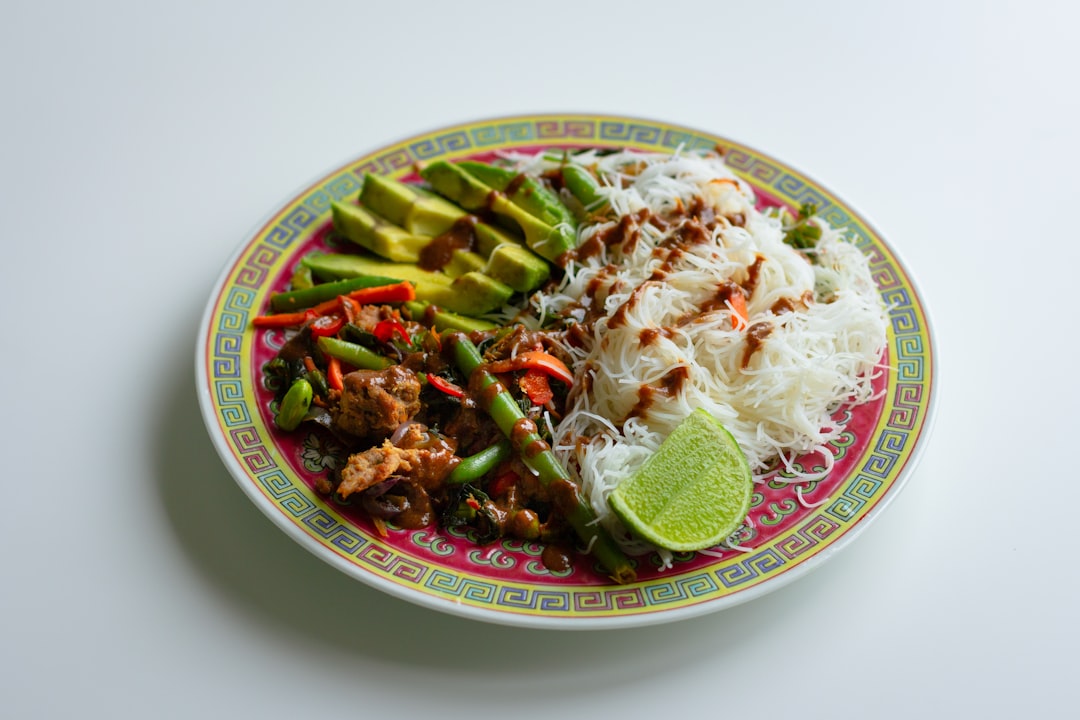A Taste of North Macedonia From Flaky Burek to Fiery Rakija
A Taste of North Macedonia From Flaky Burek to Fiery Rakija - Mouthwatering Macedonian Breakfast: Mekici and Local Cheeses

Mekici and Local Cheeses Macedonian breakfasts offer an array of delectable options, from the crispy and flavorful mekici fritters to the diverse range of local cheeses.
These traditional dishes showcase the rich culinary heritage of the region.
While mekici, similar to doughnuts, are a beloved breakfast staple, the breakfast table is also graced by savory pastries like burek and refreshing dishes such as the yogurt-based tarator soup.
Mekici and Local Cheeses": Mekici, the traditional Macedonian fritters, are made with a unique combination of ingredients including flour, salt, baking powder, eggs, yeast, milk, and water, resulting in a texture and flavor profile distinct from regular doughnuts.
The Shar-Mountain cheese, a unique Macedonian variety, is produced using the milk of domestic animals that graze on the diverse vegetation of the Shar Mountain region, imparting a distinctive terroir-driven flavor.
Tarator, a refreshing cold soup made with yogurt, cucumbers, and garlic, is a common and beloved breakfast item in North Macedonia, providing a light and flavorful counterpart to the heartier pastries.
Burek, the savory phyllo dough pastry filled with cheese, meat, or spinach, is not exclusive to Macedonia but has become a breakfast staple, showcasing the country's culinary traditions.
Zelnik, a traditional Macedonian pie, can be filled with a variety of ingredients such as cheese, spinach, eggs, meat, leeks, or cabbage, highlighting the versatility of the dish and the region's diverse flavors.
The use of domestic animal milk in Macedonian breakfast dishes, such as the Shar-Mountain cheese, contributes to a unique flavor profile that is influenced by the local terroir and traditional farming practices.
What else is in this post?
- A Taste of North Macedonia From Flaky Burek to Fiery Rakija - Mouthwatering Macedonian Breakfast: Mekici and Local Cheeses
- A Taste of North Macedonia From Flaky Burek to Fiery Rakija - The Art of Flaky Perfection: Savory Burek Pies
- A Taste of North Macedonia From Flaky Burek to Fiery Rakija - Hearty Wintertime Delight: Sarma - Stuffed Cabbage Rolls
- A Taste of North Macedonia From Flaky Burek to Fiery Rakija - Stewing Up Tradition: Tavce Gravce, North Macedonia's Baked Beans
- A Taste of North Macedonia From Flaky Burek to Fiery Rakija - Pastrmajlija: Baked Dough Pie with Meaty or Veggie Toppings
- A Taste of North Macedonia From Flaky Burek to Fiery Rakija - Rakia Revelry: Exploring North Macedonia's Potent Fruit Brandies
A Taste of North Macedonia From Flaky Burek to Fiery Rakija - The Art of Flaky Perfection: Savory Burek Pies
Savory Burek Pies": Burek, a traditional Balkan savory pastry, has become a beloved part of North Macedonian cuisine.
The flaky phyllo dough layers can be filled with a variety of ingredients, from cheese and spinach to ground meat, creating a diverse range of flavors and textures.
While burek has evolved from its Turkish origins, it remains a source of national pride in North Macedonia, showcasing the region's culinary heritage.
The flakiness of the perfect burek crust is achieved through a meticulous kneading process, where the dough is repeatedly folded and stretched to create distinct layers of phyllo.
Traditionally, burek dough is made without any leavening agents, relying solely on the development of gluten through extensive kneading to attain its signature light and airy texture.
The filling for burek can vary widely, but a classic Macedonian version features a savory blend of ground beef, onions, and spices, creating a robust and flavorful contrast to the delicate pastry.
Baking burek at the optimal temperature of around 400°F (200°C) is crucial, as it allows the layers of phyllo to puff up and achieve the desired golden-brown hue, while ensuring the filling is cooked through.
Burek can be shaped into a variety of forms, from spirals and rolls to triangles and pies, each offering a unique visual appeal and textural experience for the discerning palate.
The addition of feta or mozzarella cheese to the burek filling introduces a tangy and melty element, complementing the flaky pastry and savory meat or vegetable components.
Serving burek with a side of creamy yogurt is a traditional Balkan pairing, providing a refreshing contrast to the rich and indulgent pastry.
A Taste of North Macedonia From Flaky Burek to Fiery Rakija - Hearty Wintertime Delight: Sarma - Stuffed Cabbage Rolls

Sarma - Stuffed Cabbage Rolls": Sarma, the traditional stuffed cabbage rolls of North Macedonia and other Balkan countries, is a beloved comfort food that shines during the colder months.
The dish features flavorful ground meat, rice, and spices wrapped in tender cabbage leaves and simmered in a savory broth, creating a hearty and satisfying meal.
With diverse regional recipes and variations, Sarma remains a cherished culinary treasure that brings families and communities together, especially on chilly winter evenings.
Sarma, the stuffed cabbage rolls from North Macedonia, are believed to have originated in the Ottoman Empire, where similar dishes were popular in the 15th century.
The dish likely spread across the Balkans during the Ottoman rule.
Cabbage leaves used in traditional Sarma recipes are often pre-cooked or blanched to make them more pliable and easier to roll around the filling.
This step also helps to tenderize the leaves.
The filling for Sarma typically consists of a mixture of ground meat, rice, onions, and spices.
Some recipes also include additional ingredients like bacon, sauerkraut, or tomato paste to enhance the flavor.
Sarma is often simmered in a broth or sauce, which helps to infuse the rolls with moisture and deepen the flavor.
The braising process can take several hours, allowing the ingredients to meld together.
The size and shape of Sarma can vary, with some regions favoring larger, cigar-shaped rolls, while others prefer smaller, bite-sized portions.
This flexibility allows for personal and regional preferences.
Sarma is considered a traditional comfort food in North Macedonia and the Balkans, often served during the colder months or at family gatherings.
It is a hearty and satisfying dish that has been passed down through generations.
While the basic recipe for Sarma remains relatively consistent, there are subtle variations in the spices, herbs, and cooking methods used across different regions and households.
This diversity adds to the richness of the Balkan culinary tradition.
Sarma is often accompanied by sides such as mashed potatoes, bread, or salad, creating a well-balanced and filling meal.
The dish's versatility allows it to be enjoyed as a main course or as part of a larger spread.
A Taste of North Macedonia From Flaky Burek to Fiery Rakija - Stewing Up Tradition: Tavce Gravce, North Macedonia's Baked Beans
Tavce Gravce, North Macedonia's Baked Beans": Tavce gravce, a beloved traditional Macedonian dish, showcases the rich culinary heritage of the Balkan region.
This slow-cooked baked bean recipe, often prepared with a variety of herbs and spices, has evolved over time to suit modern tastes while retaining its comforting and hearty flavors.
Tavce gravce's popularity extends beyond North Macedonia, with similar variations found across the Balkans, highlighting the shared culinary traditions that unite the people of this diverse area.
The traditional clay pot used to cook Tavce Gravce, called a "tava", is often passed down through generations in Macedonian families, making it a treasured family heirloom.
The dish can be traced back to the Ottoman Empire, where a similar bean dish was popular, and was later adapted by Macedonian cooks to create Tavce Gravce.
Tavce Gravce is often served on Fridays during Christmas and Lent, making it a staple of Macedonian holiday cuisine.
The traditional way of preparing Tavce Gravce can take up to 12 hours, with the beans simmering slowly in the clay pot to absorb the flavors.
The type of bean used in Tavce Gravce, typically white or green beans, is high in fiber and protein, making it a nutritious and filling meal option.
The addition of paprika to Tavce Gravce gives the dish its distinctive smoky flavor, which is a hallmark of Macedonian cuisine.
Tavce Gravce is often served with a side of crusty bread or cornbread, which is used to mop up the flavorful sauce.
The dish is a staple in other Balkan countries, including Bosnia and Herzegovina, Croatia, and Serbia, where it is known by different names, such as "pasulj prebranac" or "grah prebranac".
The chili pepper flakes added on top of Tavce Gravce give the dish an extra kick of heat, which is a characteristic of Macedonian cuisine, known for its bold flavors and spices.
A Taste of North Macedonia From Flaky Burek to Fiery Rakija - Pastrmajlija: Baked Dough Pie with Meaty or Veggie Toppings

Pastrmajlija, a traditional Macedonian savory pie, is a must-try culinary delight for those exploring the flavors of North Macedonia.
This hearty dish features a crispy crust and a flavorful filling of cubed or sliced meat, often pork or cured mutton, along with eggs and sometimes spicy peppers.
While the classic Pastrmajlija hails from the city of Skopje, regional variations like the Tipska Pastrmajlija from Stip and the Veleka Pastrmajlija from Vele offer unique twists on this beloved comfort food.
Pastrmajlija originated in the city of Skopje, North Macedonia, and is a traditional savory pie with a unique elongated oval shape.
The pie's dough is topped with cubed or sliced meat, usually pork or mutton, and can also include ingredients like eggs and hot peppers.
The traditional baking method in high-temperature ovens results in a crispy crust and a flavorful filling.
There are several regional variations of Pastrmajlija, including the "Tipska Pastrmajlija" from Stip and the "Veleka Pastrmajlija" from Vele, each with slightly different ingredients and flavors.
The name "Pastrmajlija" comes from the word "pastrma," which means salted and dried sheep or lamb meat, a key ingredient in the dish.
Pastrmajlija is a hearty and comforting dish, often served with a side of hot pickled peppers, and is popular in North Macedonia, especially during the colder winter months.
The Cookbook" by Katerina Nitsou.
The dish is widely available in restaurants, markets, and cafes throughout North Macedonia, and is even celebrated in festivals dedicated to Pastrmajlija.
The unique oval shape of the Pastrmajlija pie is believed to have evolved to maximize the surface area for the crispy crust.
The high-temperature baking process used for Pastrmajlija is thought to have developed as a way to quickly cook the meat and vegetables, making it an efficient and practical dish for traditional Macedonian households.
A Taste of North Macedonia From Flaky Burek to Fiery Rakija - Rakia Revelry: Exploring North Macedonia's Potent Fruit Brandies
North Macedonia's rakia, a potent fruit brandy, has a rich cultural heritage and diverse flavors that captivate Balkan communities.
This spirit, with an alcohol content ranging from 40% to 60%, is deeply rooted in the country's culinary traditions and enjoys widespread popularity across generations.
Local establishments, such as Rakija Bar Kaldrma and Skopski Merak, provide a platform for tasting and exploring the nuances of this unique Balkan delicacy.
Exploring North Macedonia's Potent Fruit Brandies": The alcohol content of rakia can range from 40% to as high as 60%, making it one of the most potent fruit brandies in the world.
Rakia is traditionally distilled using copper alembic stills, a method that enhances the spirit's complex flavors and aromas.
The fermentation process for rakia can take up to several months, requiring meticulous attention to temperature and yeast strains.
Rakia is often aged in oak barrels, a practice that imparts unique vanilla, caramel, and woody notes to the final product.
Rakia production is deeply rooted in North Macedonian culture, with families often passing down their secret recipes and techniques through generations.
In addition to plum, rakia can also be made from a variety of other fruits, including grapes, apricots, pears, and even figs.
The distillation process for rakia involves a two-step procedure, where the initial "head" and "tail" portions are discarded to ensure a smooth, refined spirit.
Rakia is often enjoyed as a digestif, with its high alcohol content believed to aid in digestion after a heavy meal.
North Macedonia's rakia industry has seen a renaissance in recent years, with artisanal producers experimenting with new fruit combinations and aging techniques.
